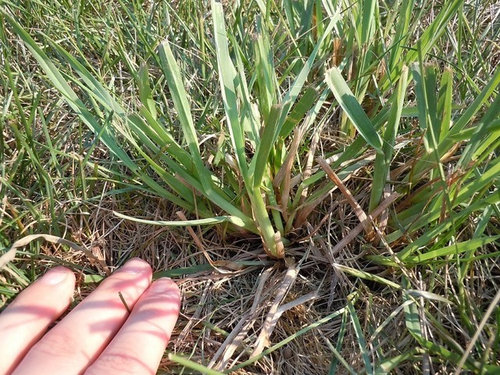Help identifying grass/weed
GreenBlood10
11 years ago
Featured Answer
Comments (7)
Lawn_Hobby
11 years agoLawn_Hobby
11 years agoRelated Professionals
Allen Landscape Architects & Landscape Designers · Forest Park Landscape Architects & Landscape Designers · Bethlehem Landscape Contractors · Bridgeport Landscape Contractors · Cambridge Landscape Contractors · Canton Landscape Contractors · Chattanooga Landscape Contractors · Coeur d'Alene Landscape Contractors · El Sobrante Landscape Contractors · Emmaus Landscape Contractors · Los Banos Landscape Contractors · Lynwood Landscape Contractors · Mendota Heights Landscape Contractors · San Pedro Landscape Contractors · Washington Landscape ContractorsZoysiaSod
11 years agoLawn_Hobby
11 years agoZoysiaSod
11 years agoLawn_Hobby
11 years ago
Related Stories

EDIBLE GARDENSNatural Ways to Get Rid of Weeds in Your Garden
Use these techniques to help prevent the spread of weeds and to learn about your soil
Full Story
GARDENING GUIDESWeed War: When and How to Use Chemical Herbicides
Before you spray, arm yourself with knowledge about which weed killers — natural or synthetic — are right for your yard
Full Story
GARDENING GUIDESLet's Weed Out 4 Native Plant Myths
Plant wisely for a garden that supports pollinators and requires less work
Full Story
GARDENING GUIDES5 Ways to Naturally Win the Weed War
Show irksome weeds no mercy with these tricks for combating them sans chemicals
Full Story
INSPIRING GARDENSInside Houzz: A Waterfront Property Ditches the Grass for a Garden
New drought-tolerant plantings and outdoor gathering spaces help this California backyard take in the view without wasting space or water
Full Story
GARDENING GUIDES5 Weed-Smothering Ground Covers
Let these landscape plants do the dirty work of choking out weeds while you sit back and enjoy the view
Full Story
GARDENING GUIDESTackle Weeds the Natural Way
Instead of dousing your yard with chemicals to wipe out weeds, let time and nature work their magic via smothering and solarization
Full Story
GARDENING GUIDESGreat Design Plant: Bugle Weed, a Quick Ground Cover
It’s highly adaptable, suppresses weeds, reduces erosion and provide weeks of bright flowers. Just watch for invasiveness
Full Story
HOUZZ TOURSHouzz Tour: From Overgrown Weeds to Picturesque Farmhouse Expanse
This once-neglected 100-acre South Carolina site now features a lake, a wood-filled farmhouse and a far-reaching view
Full Story
CENTRAL PLAINS NATIVE PLANTS10 Top Grasses for the Central Plains
Low-maintenance grasses provide seasonal interest and wildlife habitat, and aid good design
Full StoryMore Discussions









Lawn_Hobby